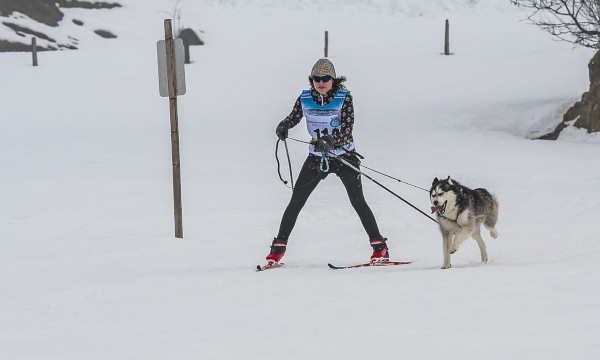Table of Contents
If your dog meets the minimum weight requirement, is healthy, and loves to run – congratulations, you have got yourself a skijoring buddy! Here are the most popular skijoring dog breeds and a couple of criteria you need to check before heading out to the trail.
Best Skijoring Dog Breeds
Most of the skijoring breeds have one thing in common – they are used to snowy terrains. That is why most, not all, skijoring dogs come from the North. Some of the most popular skijoring dog breeds are the following.
1. Seppala Siberian Sleddogs
Seppala sleddogs originated from an amalgam of tribal dogs from various regions of the vast lands of Siberia. The dog is known for showing endless endurance, strength, and versatility, owing to the hardiness and vigor of its forebears during harsh environmental conditions.
This medium-sized canine has an average height of 23 inches. It possesses a balanced front and sharply-defined rear angulation with laid-back arms and shoulders.
The dog shows an active and merry disposition. It is also gentle, docile, affectionate, and obedient towards its owners. However, it remains reserved with strangers.
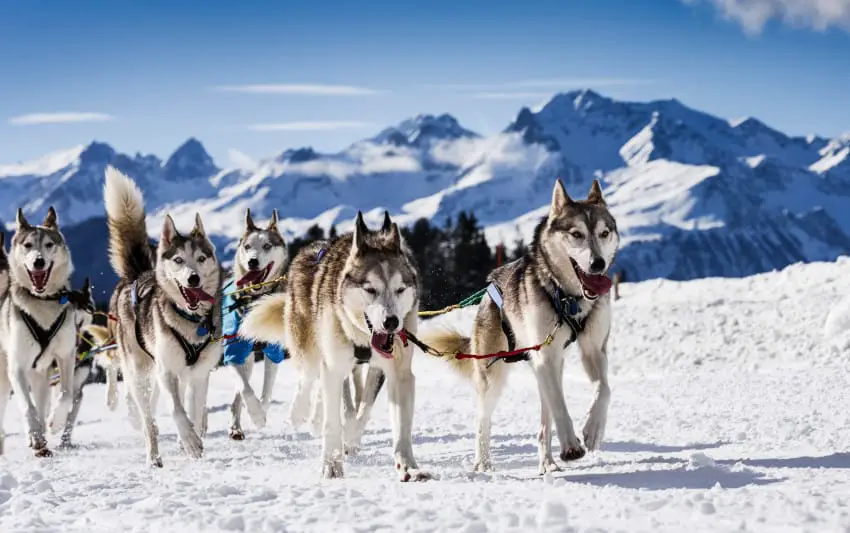
2. Samoyeds
Known as the cutest winter dogs, Samoyeds enjoy strenuous training and happily exhibit complete obedience to their owners. They also enjoy any activity that includes snow and pulling.
These dogs show extreme agility in herding, weight pulling, and sledding. They are friendly and the happiest when living in close quarters with their families. Additionally, Samoyeds are pretty intelligent and will come in handy as your winter companions.
Their structure is built for long endurance runs rather than shorter swift sprints. So, in short, this dog can easily sustain a steady 5 to 7 miles per hour.
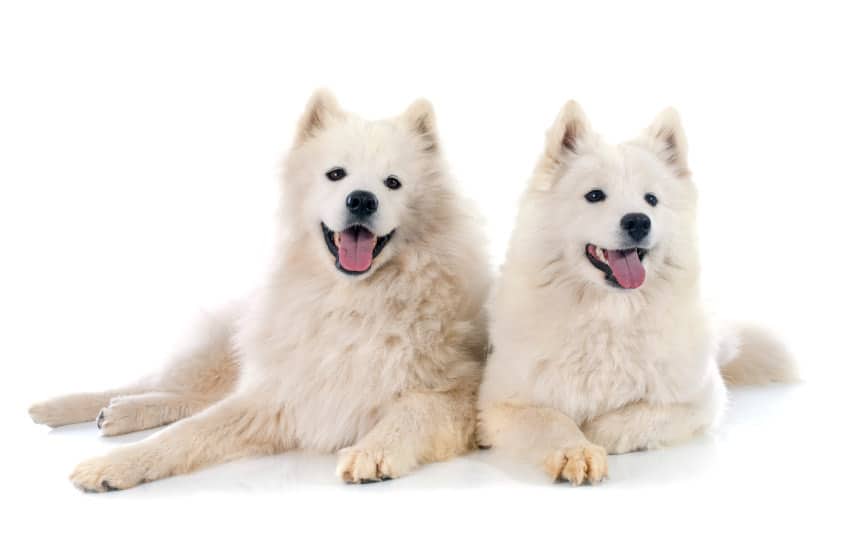
3. Alaskan and Siberian Huskies
Alaskan and Siberian Huskies are culturally known as sled dogs and have retained a lot of their wild nature. They prefer a colder climate, so anything below 10°C works. Their performance slows down in relatively hotter climates.
They are small and powerful dogs that love to run but often require much attention and training to domesticate. They can quickly run up to 40 km/h, so you can count on them to cover around 200 km on any given day.
Also, they’re always looking for an adventure. When it comes to obedience, huskies tend to be more obedient when active and enjoying activities.
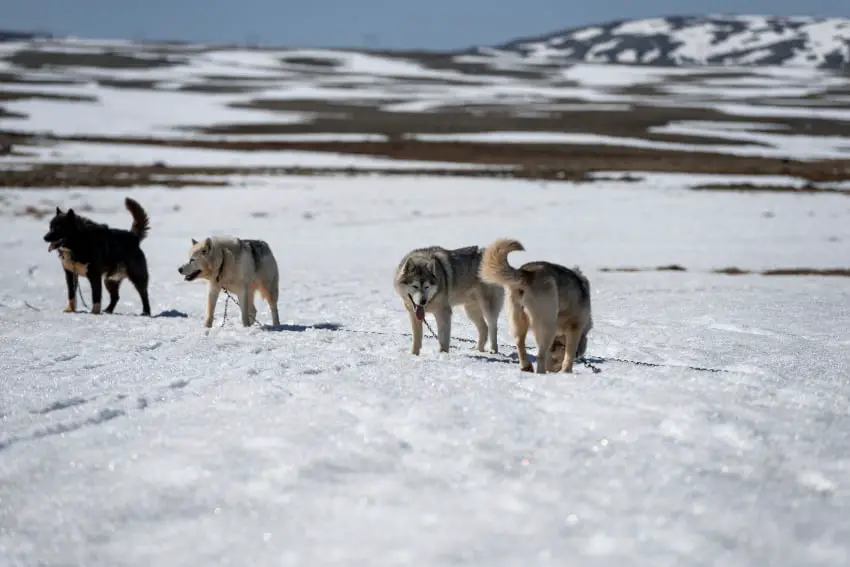
4. German Shepherds
German Shepherds are one of the easiest dogs to train out there because of their incredibly loyal demeanor. They are low-maintenance and apartment-friendly. Their strong body and build make them a great hiking and an even better skijoring companion.
The dog looks powerful, with a height of 22 to 26 inches and a medium coat. It is also very obedient and learns to handle strangers quickly.
German shepherds are also one of the most intelligent breeds, so they are best suited for rescue missions. Since they are excellent family dogs, they can accompany you and your family members on a fun skijoring race.
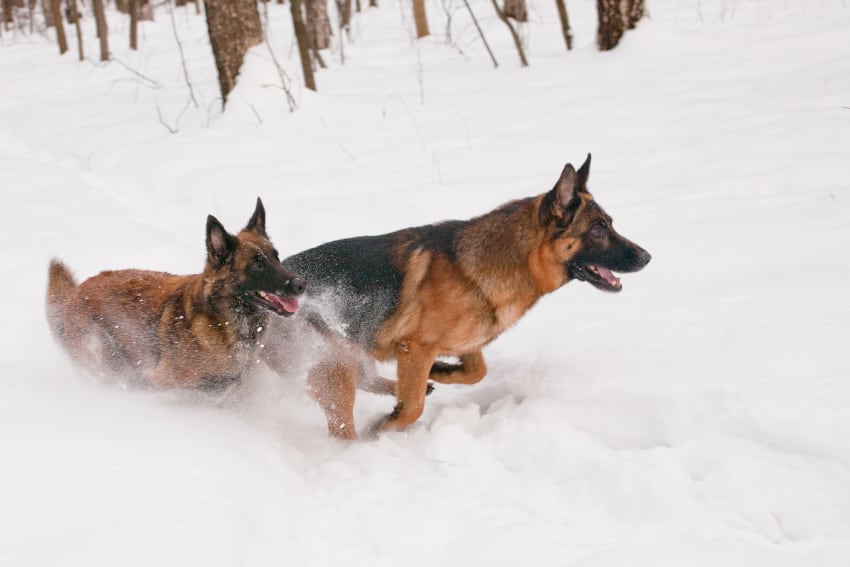
5. Malamutes
This mixture of sled dogs was originally bred for its endurance and strength, making it perfect for skijoring. Keep in mind that it is generally slower in long-distance racing compared to other sled dogs. You can start training it when it reaches 12 months of age.
Since these dogs are slow learners, you should gradually increase their teaching time and duration as they age. Once they’re 18 years old, they can participate in skijoring races.
With Malamutes, you need to keep them hydrated. These dogs are very fond of people; however, you need to be mindful of them around small children and animals.
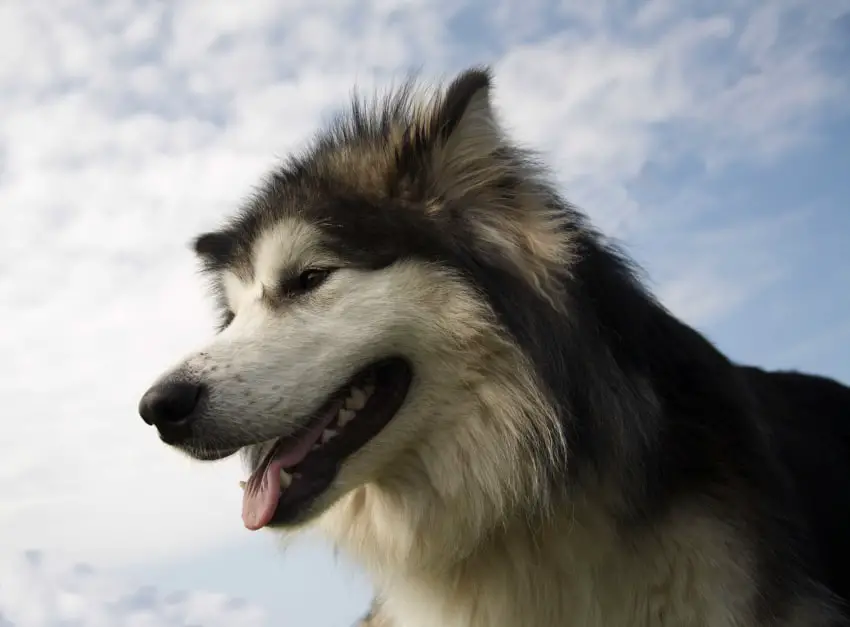
6. Labrador and Golden Retrievers
We recommend a Labrador and Golden Retriever if you are new to skijoring because it is easy to train and quite obedient. Moreover, the dog tolerates and rather enjoys colder climates. It is also very affectionate around children and other pets.
This intelligent breed likes to indulge in strenuous activities. It has a potential for mouthiness, so you need to be mindful of that. The dog tends to bark and howl when confined to small spaces for a long time.
It is very playful, and since the dog has a very strong build, it doesn’t mind indulging in challenging exercises and activities.
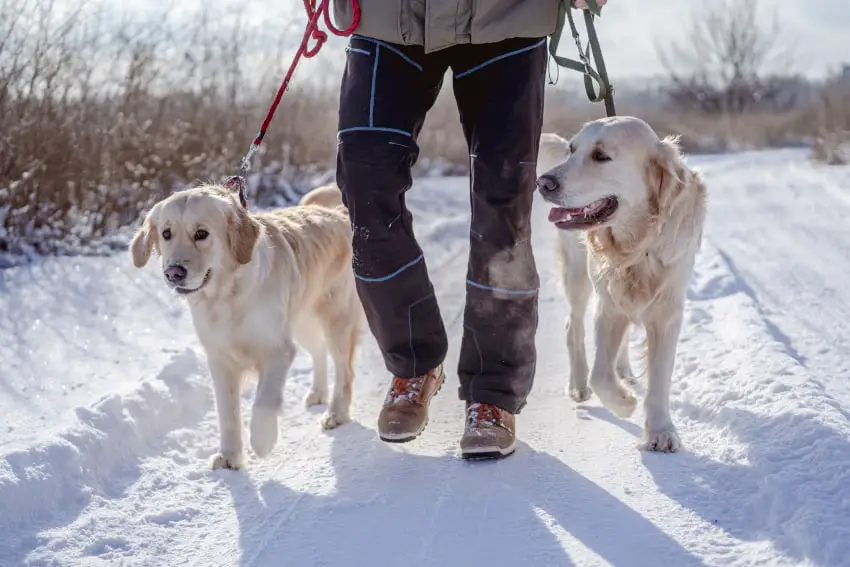
7. Canadian Eskimo Dogs
This Asian dog offers a lifespan of 20-28 years. It exhibits wolf-like facial features and is sharp and intelligent. The Canadian Eskimo is not a domestic pet and is known for doing arduous tasks in the harshest climates.
The dog is most happy when it is given a job. It is a pack-oriented breed that responds well to food and toys. However, the dog has strong predatory instincts and should not be kept in the company of children.
Apart from skijoring, the dog is excellent at guarding resources, making it an essential camping companion. Lastly, it loves zero temperatures and gets angry when living in temperate climates.
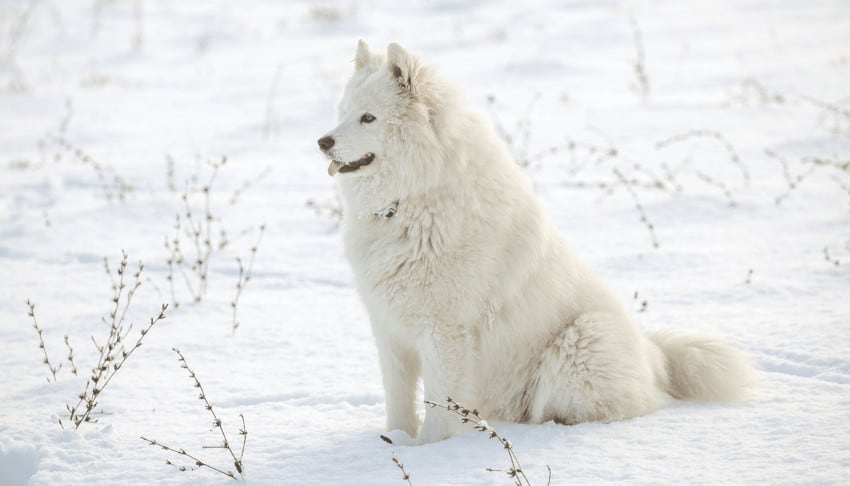
8. Japanese Akitas
This dog breed has a large, heavy, and balanced body. It also has a triangular head with mighty jaws. The dog boasts a short, sleek single and double coat, perfect for skijoring.
It is pretty intelligent and courageous. Also, the dog happens to be stubborn, so it tends to defy orders. However, you can teach it to obey orders with continuous training and exercise.
The dog loves to indulge in long walks and 30 to 40 minutes of strenuous exercise. It is affectionate with family but wary of strangers and may need additional training in that area.
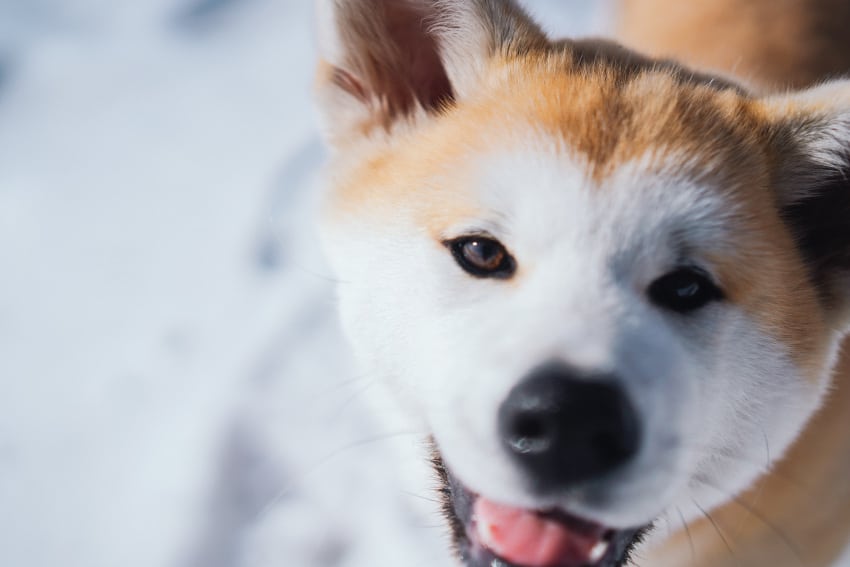
9. Border Collies
This dog breed is extraordinarily adaptable and exhibits friendliness and joyfulness. It is perfect for novice owners who are new to the sport. The dog has excellent tolerance for extremely low and snowy climates.
You’ll find the dog to be low-maintenance and friendly towards strangers. It is quite active, making it best suited for the countryside. If it is confined to closed spaces for too long, it can become quite unhappy and exhibit destructive tendencies.
This dog breed is intelligent and known for responding well to praise. So while training your dog for skijoring, you can combine praise with reinforcement for best results.
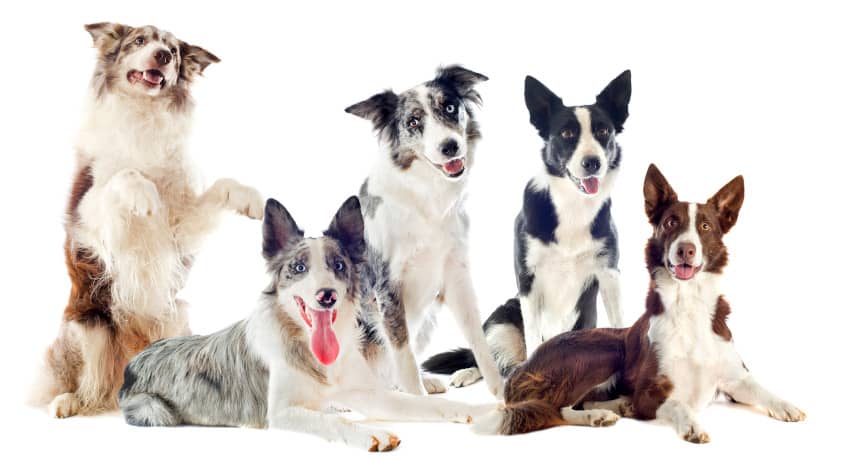
10. German Shorthaired Pointers
The German Shorthaired Pointers don’t mind being alone and are equally happy in cold and hot climates, unlike many other dogs. They also adapt well to apartments.
On average, the dog is 21-25 inches and comes with a short coat length. It boasts a rich brown color with speckled patterns. The dog is fairly easy to train and is quite obedient.
The best thing about this dog breed is that it shows extreme loyalty to its owner. Apart from skijoring, it is also fond of water sports. Its intuitive nature allows it to hunt and fetch easily.
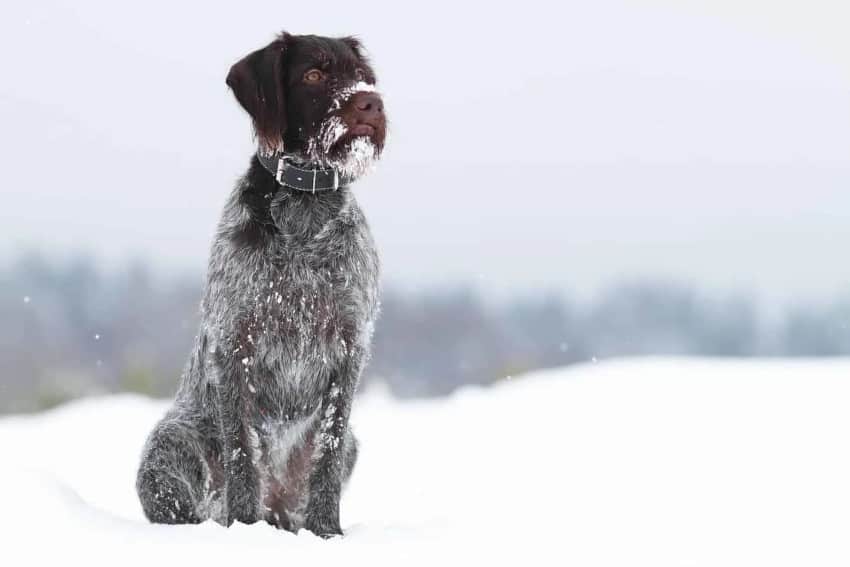
Also Ran
Dalmatians
This medium-sized dog breed has a white coat and is well-known for its exceptional hunting skills. It is fast, quick and intelligent, but more importantly, it is built for harsher climates, making it suitable for skijoring.
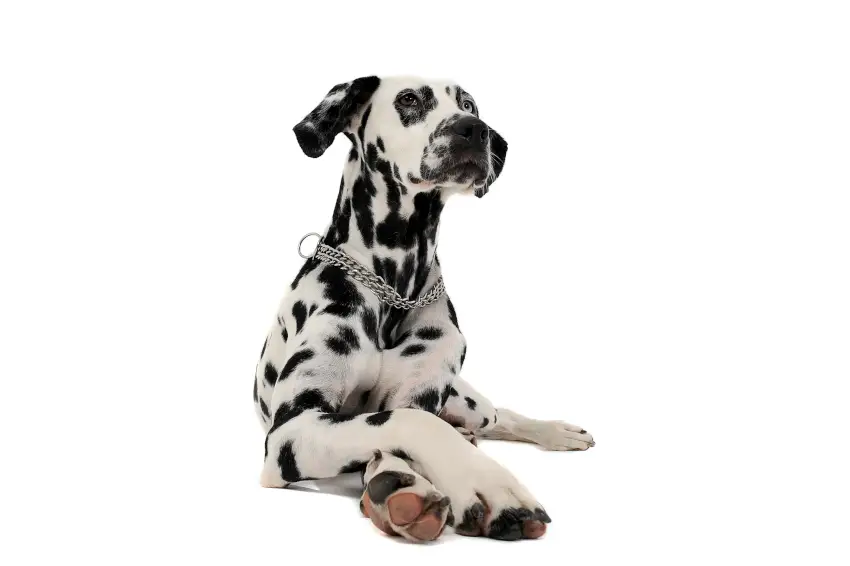
Greyhounds
This breed has expertise in greyhound racing but it also comes in handy for skijoring. It is a great family pet that shows fierceness and utmost loyalty towards its owners.
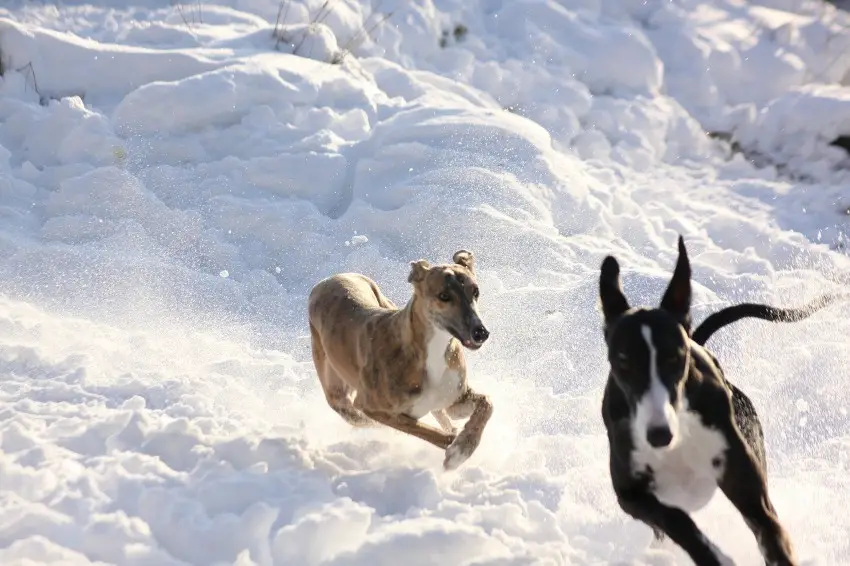
Great Danes
Also known as the German Mastiff, this German breed is known for its excellent hunting tendency. It is one of the largest breeds in the world and is famous for its agility and fast pace.
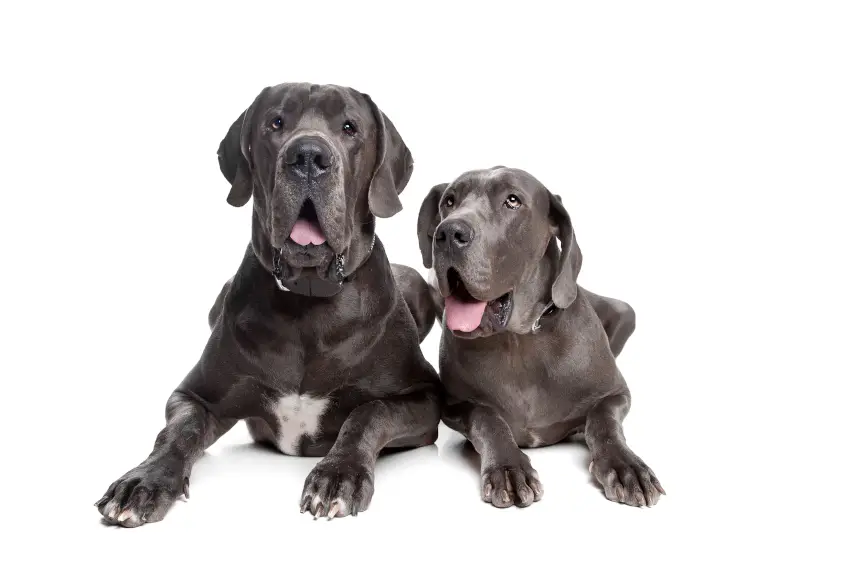
Vizslas
Vizslas are sporting dogs from Hungary, and they are known for their loyalty and fierceness. When in the field, they are sure to take you through to the end of the race.
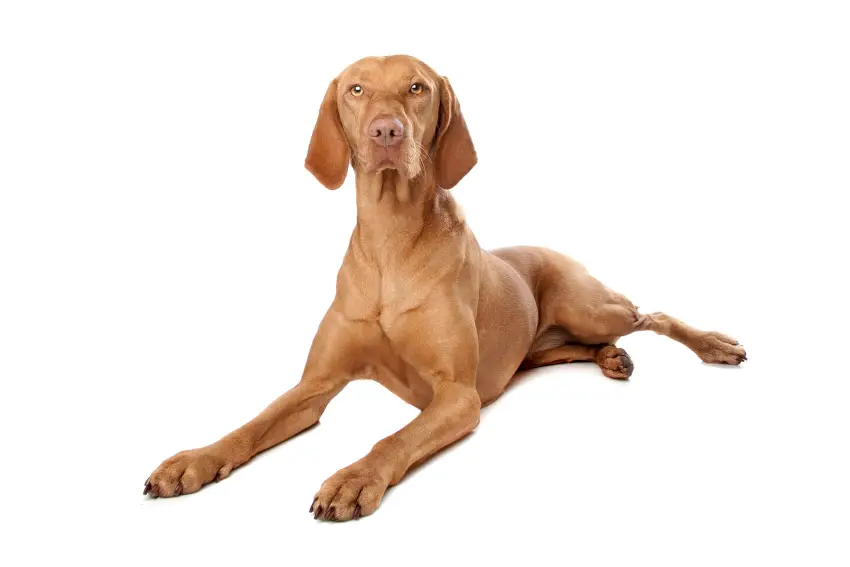
Chow Chows
This breed is originally from Northern China and boasts a muscular build. It has a square profile, broad skull, and erect ears, and its dense double coat makes it tolerant toward low-temperature harsh climates.
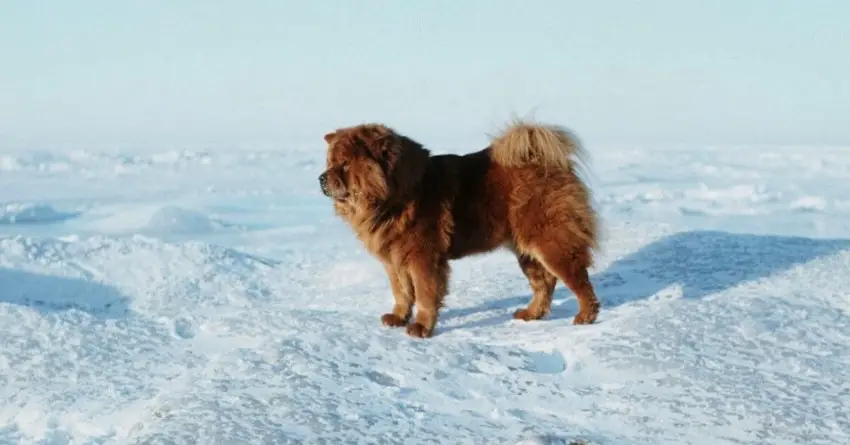
Is Your Dog OK for Skijoring?
To determine the best dogs for skijoring of if your dog can do skijoring, consider the following criteria. While your dog does not have to qualify for all of these, he/ she should be able to check most of the boxes. This criterion is set to determine if your dog can handle extreme winter conditions and have the mindset required for pulling you in open areas between a crowd of people and their dogs.
- The dog has a thick coat for protection against the cold weather and to prevent harness chafing. In case your dog has a thin coat, he/ she can still do skijoring if they have the right harness.
- Pulls leash without any hassle.
- Obeys voice commands.
- Knows how to stay focused when other dogs and people are present.
- Has thick and stiff paw hair that does not pack up with snow, as opposed to silky and thin paw hair.
- Does not have an overly strong drive to chase prey. The last thing you want is for your dog to start chasing a squirrel!
- Your dog is not too large – which could make him/ her impossible to stop.
1. Build and Strength
The best dogs for skijoring have a large or medium built with a minimum of 35 pounds in weight. Although small dogs can also go for skijoring, they may not be able to contribute much to the momentum. In case you have a small dog you is super energetic and loves to run in the snow, there is no harm taking him/ her skijoring with you. The dog can show off his/ her strength while trying to pull you, and you can put in more effort using your skis and poles.
2. Pulling
If your dog loves to pull or do not mind pulling you for a longer duration, your dog could be ideal for this sport. Also, some dogs do not like it if it gets too cold or snowy. While with the right cold-weather gear you can cozy up your dog and try skijoring, positive training also plays an important role.
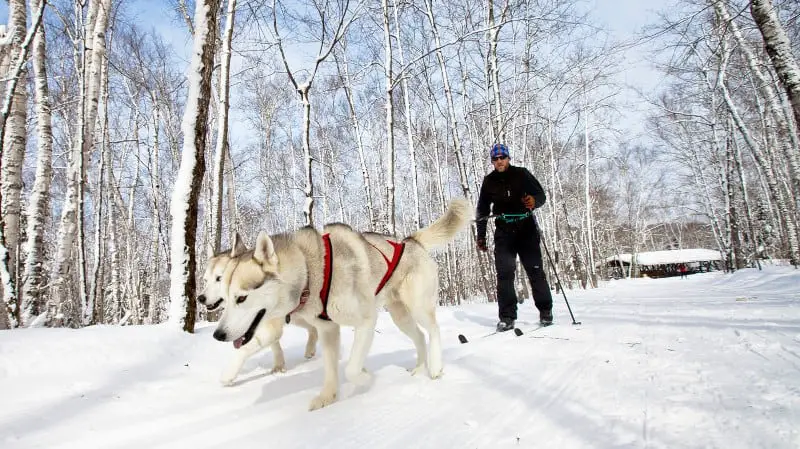
3. Obedience
It is also important that your dog listens and follows your instructions and does not get easily distracted. The last thing you want is to have your dog interfere with other skijorers and not listening to your commands. As long as your dog is healthy, loves to run, and follow your instructions on a consistent basis, you can enjoy skijoring with him/ her no matter what the breed is.
Closing Thoughts
So, is your dog ready to enjoy skijoring with you? The good news is that unlike dogsledding, skijoring races are shorter and your dog has to run from 5 to 20 kilometers. For dogs’ safety, the Skijoring organizations recommend not skijoring with dogs that are under 35 pounds. If you have two to three dogs with similar builds, they can even do skijoring in a team.
These skijoring dog breeds have strong paws that enable them to easily move in extreme cold terrains. Though these dogs vary in their athletic build, size, weight, and resistance towards cold, there is one thing that all of them have in common –their love for running, towing, and enjoying the outdoors in the winter.

